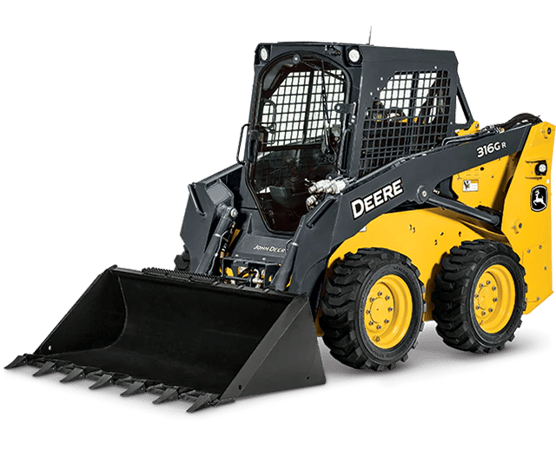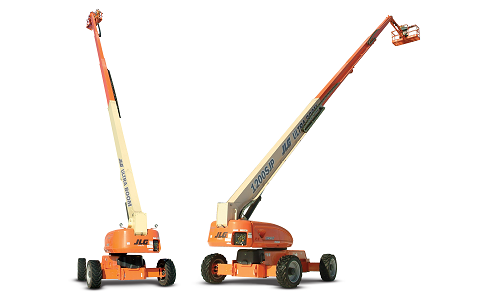Forklift Rental: Heavy Lifting Equipment for Warehousing and More
Forklift Rental: Heavy Lifting Equipment for Warehousing and More
Blog Article
Maximize Your Spending Plan by Recognizing the Expenses Connected With Building And Construction Devices Leasings
Comprehending the complete scope of expenses linked with construction tools rentals is crucial for optimizing your spending plan. What techniques can be utilized to effectively handle these costs and guarantee an extra effective rental experience?
Introduction of Rental Costs
When taking into consideration building tools services, understanding the associated expenses is paramount for efficient budgeting and task planning. Rental prices can vary dramatically based on numerous factors, consisting of equipment kind, period of leasing, and location. The first rental fee usually shows the tools's market demand and its associated functional abilities, affecting the overall cost.
In enhancement to the base rental rate, secondary costs might emerge, such as transportation costs, gas additional charges, and maintenance fees. It is important to represent these added expenses to accurately examine the total expense of renting out equipment. Furthermore, the rental duration can impact pricing; longer leasings might certify for discounted rates, while short-term leasings could sustain greater daily costs.

Failure of Rental Rates
A detailed understanding of rental rates is essential for service providers and project supervisors intending to maximize their spending plans. Rental rates for building devices normally include a number of components, consisting of base prices, time-based costs, and usage charges.
Base rates are the core charges related to the service of the tools, often determined by the kind and size of the machinery. These prices can differ significantly, affected by aspects such as equipment need, accessibility, and regional market trends. Time-based costs, which might be daily, weekly, or monthly, serve to suit different project timelines and rental durations.
Additionally, rental prices might include use fees, which are applicable when equipment is made use of beyond a specified limit, guaranteeing that the rental firm can account for wear and tear. Seasonal need fluctuations can additionally impact rental prices, with peak building seasons normally commanding greater prices.
Additionally, understanding the rental business's policies pertaining to maintenance and insurance policy can supply further insight right into the total price structure. By examining these elements, service providers can make informed decisions, ensuring the choice of rental tools straightens with both job needs and budget plan restraints.
Extra Costs to Consider
Comprehending the ins and outs of added costs is important for contractors to manage their overall rental costs successfully. Past the standard rental rates, different extra costs can significantly influence the complete price of tools service. These costs often consist of delivery and pickup charges, which can vary based on range and logistics entailed in transporting the equipment to and from the job site.
Moreover, some rental companies might enforce gas additional charges if the devices is returned with less fuel than when rented. It is additionally important to know possible cleansing charges, particularly for specialized devices that needs detailed upkeep after use.

Completely assessing the rental arrangement and clearing up these added charges upfront can aid professionals avoid unexpected expenses and ensure that budget plans remain undamaged throughout the project lifecycle.
Repair And Maintenance Expenditures
Routine upkeep and repair service expenses are often ignored variables that can significantly influence the total cost of building and construction devices services. When leasing equipment, it is vital to consider not just the rental costs however additionally the prospective prices connected with maintaining the equipment in optimal operating problem.
Lots of rental business include fundamental upkeep as component of the rental agreement; nevertheless, a lot more unforeseen failures or extensive repair work can lead to additional costs. It's vital to review the rental contract very carefully to recognize what maintenance services are covered and what obligations drop on the occupant.
In addition, equipment that is not well-kept can cause inefficiencies at work site, potentially raising and creating hold-ups task prices. To minimize these threats, it is suggested to perform normal examinations and keep open interaction with the rental provider regarding any issues that arise during usage.
Insurance Policy and Responsibility Prices
Insurance coverage and liability costs are vital parts that can substantially influence the total expenditure of building devices rentals (equipment rental company). These prices guarantee that both the rental company and my sources the customer are secured from prospective financial losses emerging from crashes, damages, or theft during the rental duration

In addition, clients need to know any kind of deductibles or exclusions in the insurance plan, as these can impact prospective out-of-pocket expenditures. Understanding the terms of any insurance protection is crucial to avoid unforeseen prices. Ultimately, budgeting for insurance policy and liability costs can help make sure a smoother rental experience and shield against monetary threats associated with building jobs.
Verdict
In conclusion, an extensive understanding of the costs associated with construction tools leasings is necessary for efficient budget plan management. Inevitably, notified decision-making concerning equipment services adds to the general success of construction endeavors.
Rental expenses can vary find more information considerably based on several variables, including equipment kind, period of leasing, and location (scissor lift rental). The rental period can influence prices; longer leasings may certify for reduced rates, while short-term services could sustain greater daily costs
By carrying out thorough study and engaging with reliable rental business, professionals can effectively navigate the intricacies of rental prices, inevitably maximizing their monetary resources.
Beyond the standard rental prices, various extra charges can significantly impact the overall price of equipment leasing. Rental companies typically provide responsibility insurance coverage try this out that covers injuries to 3rd parties or damage to property, while devices damages insurance policy can cover the cost of repairs or replacement if the rented tools is harmed.
Report this page